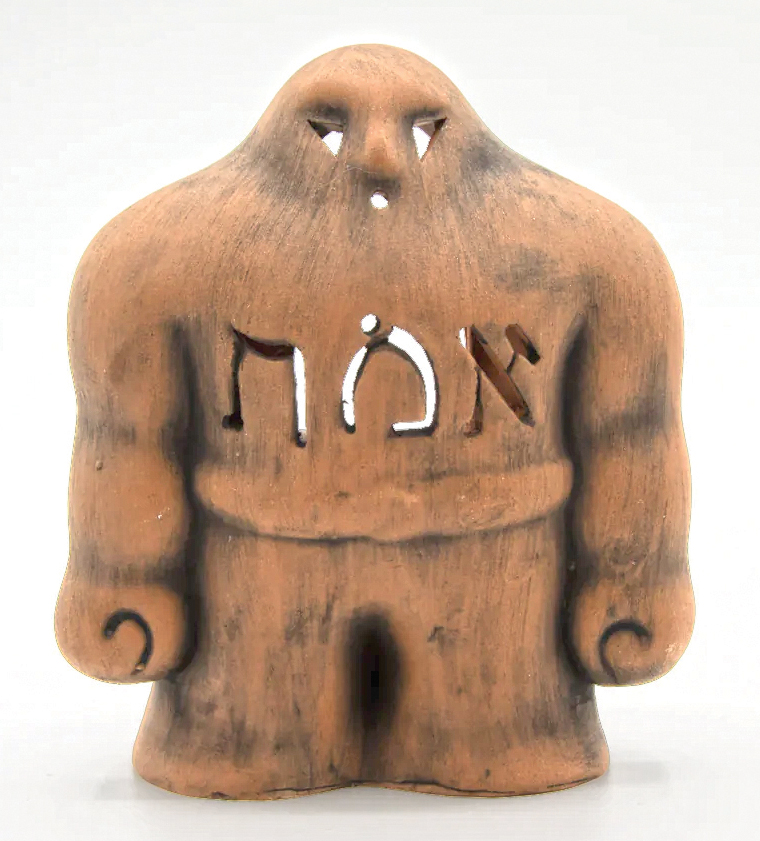What, if not golems?

In the News Series
Jewish Family Education with Candace R. Kwiatek, The Dayton Jewish Observer
“AI‑Powered Echocardiography Revolutionizes Cardiovascular Disease Care.”
“Concerns grow as AI-generated videos spread hate, racism online: ‘No safety rules.’”
“Purdue’s AI and Imaging Breakthrough: A New Era for Flawless Semiconductor Chips.”
“Nearly a third of Americans have had a ‘romantic relationship’ with an AI bot, new survey says.”
“AI glasses foster independence for visually impaired people.”
“Experimental PromptLock ransomware uses AI to encrypt, steal data.”
These headlines from recent weeks are a sample of the ever-expanding news coverage of artificial intelligence.
Formerly a low-profile specialized technology, AI became a global topic of discussion in 2022 with the public release of AI-powered ChatGPT.
Its revolutionary ability to engage in coherent, conversational dialogue allows even non-tech-savvy users to interact with AI on their digital devices simply by giving clear instructions — prompts — for specific tasks including creative writing, problem-solving, skills development, business planning, and research assistance.
Since its launch, ChatGPT’s abilities have skyrocketed, inspiring other equally stunning advances in AI, from voice-based communication to advanced reasoning and learning from experience, to taking action autonomously to achieve complex, multistep goals.
It’s clear from headlines and recent developments that this rapidly expanding technology offers endless benefits and also raises serious concerns.
But the interest and issues generated by today’s AI aren’t new. They were already evident in Isaac Asimov’s 1950s science fiction short story collection and the 2004 silver screen blockbuster it inspired, I, Robot.
Both creative works reflected a growing preoccupation with the increasingly complex relationship between humans, robots, and AI, and escalating concerns about the moral, ethical, political, and practical implications of creating ever more complex and capable machines.
In an interview with The New York Times in 1984, the Nobel Prize-winning author Isaac Bashevis Singer expressed these preoccupations and concerns in a single sentence, “What are the computers and robots of our time if not golems?”
“Golems, it must be admitted, do not play a prominent role in Jewish thought generally,” philosopher and writer Charles Rubin notes, “and even in Jewish mystical thought specifically their role is small.”
In the entire Bible there’s only a single golem reference, where it means an unformed or incomplete substance.
This scarcity is notable in rabbinic literature as well, where a golem is described in Ethics of the Fathers as “a clod lacking the defining characteristics of the wise man.”
Centuries later, Rabbi Yochanan bar Nappacha chronicled the first hours of the biblical Adam from his creation as a golem to his expulsion from the Garden as a human, a series that emphasizes the potential for calamitous failure as Adam becomes independent and exercises his free will.
In that same era, the Babylonian scholar Rava suggested that a righteous person could create a human and proceeded to do so using his mystical abilities.
But when spoken to, it was unable to reply, so the golem was returned to the dust, illustrating the potential and limitations of human power.
Golem legends multiplied during the Middle Ages and beyond, evolving into tales of wise men and mystics creating human-like clay figures and bringing them to life using sacred words.

The most widely-known of the legends involves the Talmudic scholar Rabbi Judah Loew ben Bezalel, the Maharal, of 16th-century Prague. A master of the mystical knowledge of Kabalah, the Maharal fashioned a golem from river mud, bringing it to life by placing a parchment with the Divine Name in its mouth (or in other versions, inscribing the word emet, truth, on its forehead.)
During the day, the Golem did chores at the rabbi’s command, for it only obeyed its creator.
At night, it walked the Jewish ghetto’s streets, guarding against pogroms and other threats to the community.
One Shabbat, Rabbi Loew forgot to deactivate the Golem and, without direction, it began a destructive rampage.
Distraught, the rabbi removed the Name from the Golem’s mouth, (or alternately, erased the first letter of emet to create the word met, dead), and the creature reverted back into clay, later hidden in the synagogue attic.
The story warns about the dangers of unchecked power and the consequences of good intentions without foresight.
Woven deeper into golem stories are two principles that are particularly relevant today.
“We should not fool ourselves into thinking that our otherwise acceptable imitation of divine creativity extends to making something out of nothing,” cautions Charles Rubin, emeritus professor of political science at Duquesne University.
Humans are not and never will be God, only cocreators of the world with God, limited by its natural resources and human imagination, talent, and will.
And while cocreating, Rabbi Byron Sherwin suggests we should emulate the wisdom of the golem’s creators that “resides most of all in ‘knowing when to stop,’ just as God knew when to stop creating and rest. Knowing when to stop is how our golems can be kept under our control.”
“The Golem…has long been evoked as a metaphor for artificial intelligence by scientists, philosophers, writers, and artists,” writes curator and scholar Emily Bilski.
“The motivations and methods for creating a golem, as well as the golem’s actions once it has been brought to life, have provided powerful analogies for the potential risks and benefits of creating artificial intelligence.”
Today, more than ever, we would be wise to glean the wisdom of the golem stories so we aren’t faced with having to learn it though experience. At that point, it might be too late.
At the 1965 dedication ceremony of the Weizmann Institute’s new computer, librarian Ro Oranim recounts, the renowned scholar of Jewish mysticism, Gershom Scholem, explained why he suggested it be named Golem Aleph (Golem Number One).
He pointed out “what he felt was an obvious comparison between the classic tale of the Golem and the brand new computer,” Oranim noted, closing his remarks with “‘So I…say to the Golem and its creator: develop peacefully and don’t destroy the world…’”
Next month, Part Two: The tipping point between peace and destruction.
Literature to share
Eat Small Plates by Ben and Zikki Siman-Tov. If you’re looking for colorful, delicious, healthy, make-ahead dishes for family or large gatherings, Eat Small Plates is a real find. It’s packed with over 100 recipes from around the world, all curated for the home cook, illustrated with gorgeous photos, and includes suggestions for food pairings and presentation. Whether you’re looking for breads and spreads or veggies and bites or sweets with little or no sugar, you’ll find multiple unique, tasty recipes here.
A Dragon for Hanukkah by Sarah Mlynowski. Playful, brightly colored illustrations in this picture book turn the eight nights of the Festival of Lights into a magical, celebration that only begins with a dragon. Each night features a fantastical gift that awakens the imagination and ultimately leads to a surprise ending. And along the way, the joyous messages of giving and receiving, sharing, celebrating, and family jump off the page.
To read the complete November 2025 Dayton Jewish Observer, click here.


